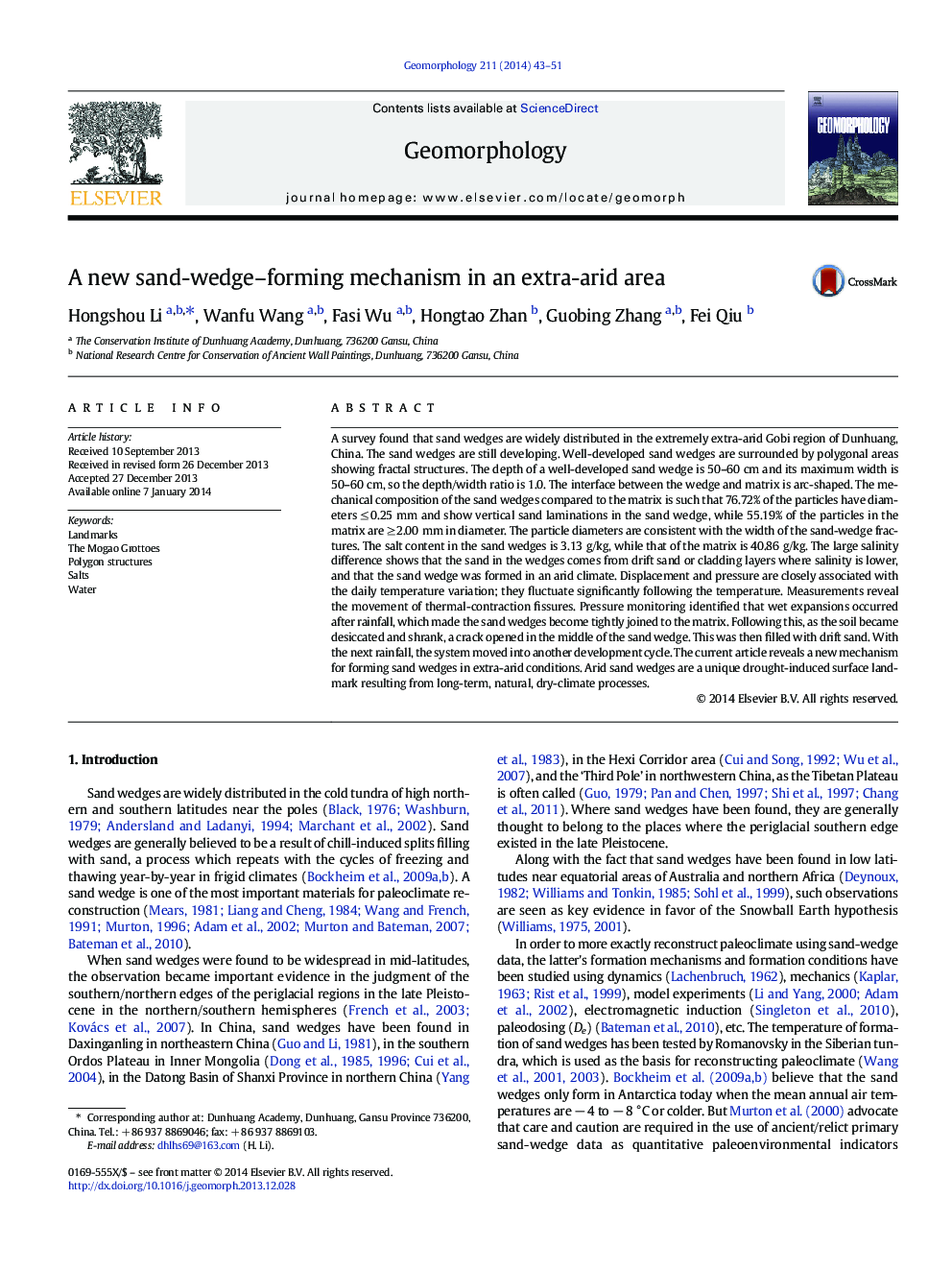| کد مقاله | کد نشریه | سال انتشار | مقاله انگلیسی | نسخه تمام متن |
|---|---|---|---|---|
| 4684575 | 1635438 | 2014 | 9 صفحه PDF | دانلود رایگان |
A survey found that sand wedges are widely distributed in the extremely extra-arid Gobi region of Dunhuang, China. The sand wedges are still developing. Well-developed sand wedges are surrounded by polygonal areas showing fractal structures. The depth of a well-developed sand wedge is 50–60 cm and its maximum width is 50–60 cm, so the depth/width ratio is 1.0. The interface between the wedge and matrix is arc-shaped. The mechanical composition of the sand wedges compared to the matrix is such that 76.72% of the particles have diameters ≤ 0.25 mm and show vertical sand laminations in the sand wedge, while 55.19% of the particles in the matrix are ≥ 2.00 mm in diameter. The particle diameters are consistent with the width of the sand-wedge fractures. The salt content in the sand wedges is 3.13 g/kg, while that of the matrix is 40.86 g/kg. The large salinity difference shows that the sand in the wedges comes from drift sand or cladding layers where salinity is lower, and that the sand wedge was formed in an arid climate. Displacement and pressure are closely associated with the daily temperature variation; they fluctuate significantly following the temperature. Measurements reveal the movement of thermal-contraction fissures. Pressure monitoring identified that wet expansions occurred after rainfall, which made the sand wedges become tightly joined to the matrix. Following this, as the soil became desiccated and shrank, a crack opened in the middle of the sand wedge. This was then filled with drift sand. With the next rainfall, the system moved into another development cycle. The current article reveals a new mechanism for forming sand wedges in extra-arid conditions. Arid sand wedges are a unique drought-induced surface landmark resulting from long-term, natural, dry-climate processes.
Journal: Geomorphology - Volume 211, 15 April 2014, Pages 43–51
